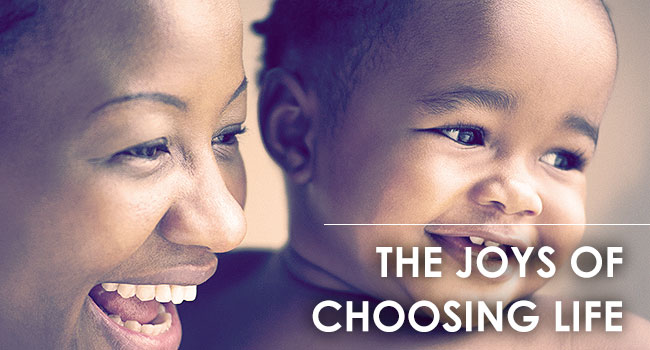The Joys of Choosing Life

While the debate on abortion continues to evoke divided views in Kenya, It is of importance to revisit the gains of motherhood vis-à-vis the risks that may be brought about by abortion.
Whereas motherhood offers a broad spectrum of benefits, the following are fundamental medical pros that have been concluded through years of medical research and study:
Research has shown that women who have no children or who give birth after the age of thirty years face a greater risk of breast cancer than women who give birth before this age. This is because pregnancy reduces the time a woman gets exposed to certain hormones the ovary produces during the menstrual cycle. Prolonged lifetime exposure of the breast tissue, which is very sensitive, to these hormones increases the risk of breast cancer. In addition pregnancy changes breast cells, causing them to become fully mature and less susceptible to cancer-causing changes. An earlier pregnancy means a smaller window of time in which your breast cells are immature and vulnerable. Further, each year of breastfeeding during a woman's lifetime cuts her breast cancer risk by 4 percent, according to findings cited in a 2010 issue of Journal of Perinatology.
Pregnancy has been seen to reduce the risks of endometriosis and endometrial cancer. Endometriosis occurs when the cells lining of the uterus (endometrium) grow outside the womb, occasioning pain, irregular bleeding, and even infertility in some women. Further research shows giving birth between the age of thirty and forty may protect against endometrial cancer. Having a baby has been deemed to be the beginning of the road to recovery by gynecologists and endocrinologists for conditions attributed to be "female disorders" such as uterine fibroids, tumours and polycystic ovaries.
Studies have also shown that hormonal changes right after birth may help the mother's brain to grow bigger. Motherhood has also proved to be a motivation that makes women make healthier and informed choices.
On the other hand, we can contrast the above benefits with the dangers occasioned by abortion. After an abortion, the main risk is infection in the womb, which is usually caused by failing to completely remove all of the foetus and associated tissue. If such an infection is untreated, it could translate to a more severe infection of the woman's reproductive organs, and as a result cause infertility or ectopic pregnancy.
Further studies indicate that women with a history of one abortion face a 2.3 times higher risk of having cervical cancer, compared to women with no history of abortion. Women with two or more abortions face a 4.92 relative risk. Similar elevated risks of subsequent ovarian and liver cancer have also been linked to single and multiple abortions. These increased risks may be linked to the unnatural disruption of the hormonal changes which accompany pregnancy and untreated cervical damage or to increased stress and the negative impact of stress on the immune system .
Some abortion patients suffer from perforation of their uterus, which may result in complications in later pregnancies.
A 1997 government funded study in Finland found that women who abort are approximately four times more likely to die in the following year than women who carry their pregnancies to term. In addition, women who carry to term are only half as likely to die as women who were not pregnant .
Abortion may also result in placenta previa, an abnormal development of the placenta due to uterine damage which increases the risk of foetal malformation, perinatal death, and excessive bleeding during labor in subsequent pregnancies.
Prior induced abortion increases the risk of premature delivery and also increases the risk of delayed delivery. Pre-term delivery increases the risk of neonatal death and handicaps.
Abortion is associated with cervical and uterine damage which may increase the risk of premature delivery, complications of labor and abnormal development of the placenta in later pregnancies. These reproductive complications are the leading causes of handicaps among newborns.
Endometritis is a post-abortion risk for all women, but especially for teenagers, who are 2.5 times more likely than women 20-29 to acquire endometritis following abortion.
Teenagers, who account for about 30 percent of all abortions, are also at much high risk of suffering many abortion related complications. This is true of both immediate complications, and of long-term reproductive damage.
Besides the medical cons of abortion, other psychological and behavioral changes include:
- Depression
- Alcohol and drug abuse
- Suicide attempts
- Eating disorders
- Sexual dysfunction
- Divorce and chronic relationship problems
- A risk of repeat Abortions.
In conclusion, abortion can never be a solution as it promotes a culture that makes human life disposable. Allowing abortion conflicts the unalienable right to life that is guaranteed under the Constitution of Kenya, 2010,(Article 26(1)) and under various international Conventions and Treaties (e.g. Article 3 of the Universal Declaration of Human Rights). Pregnancy Comes with the responsibility of taking care of the baby and in the unfortunate cases where the mother is unable to take care of the baby, other prolife alternatives such as adoption and foster care can be explored instead of killing the unborn.


